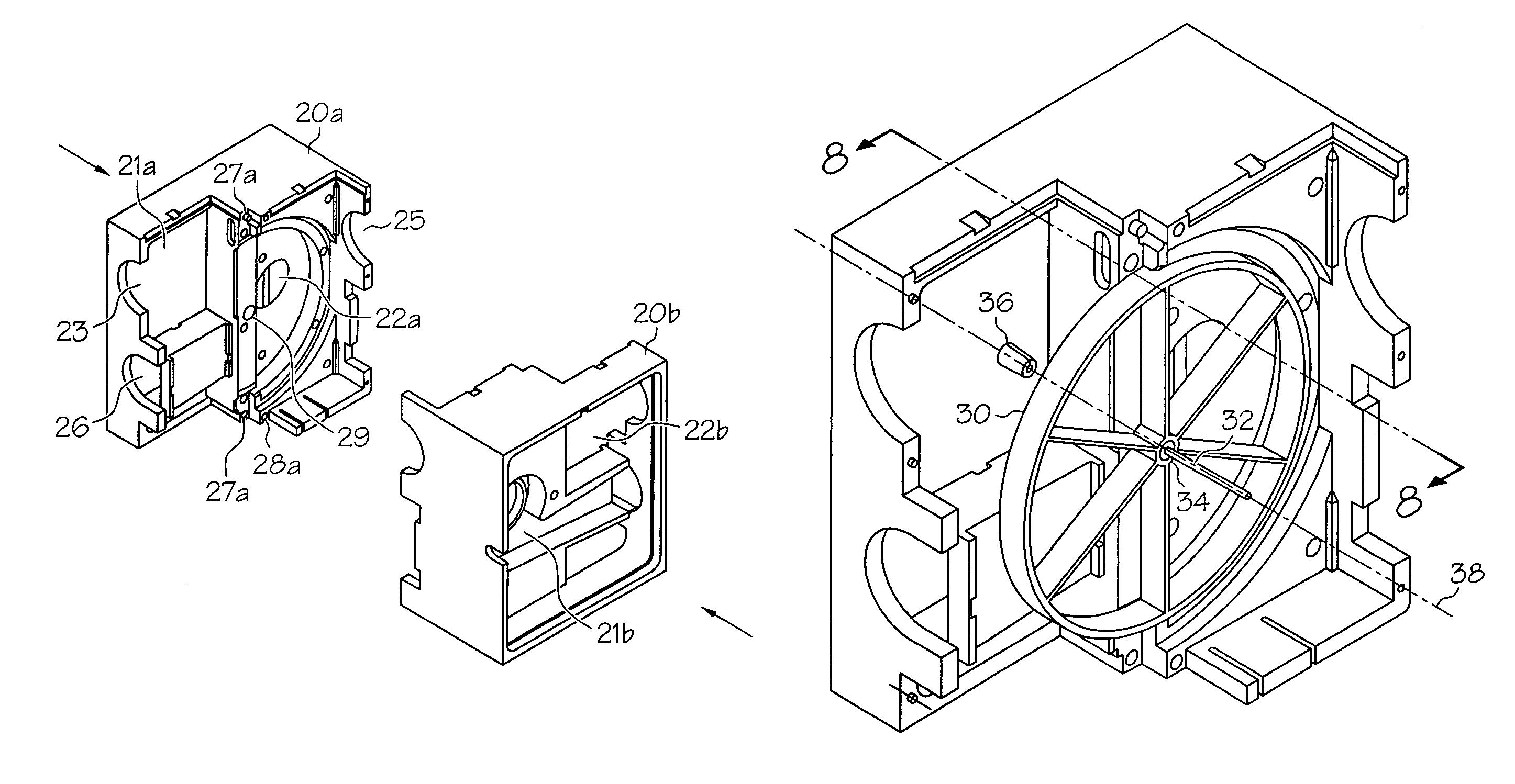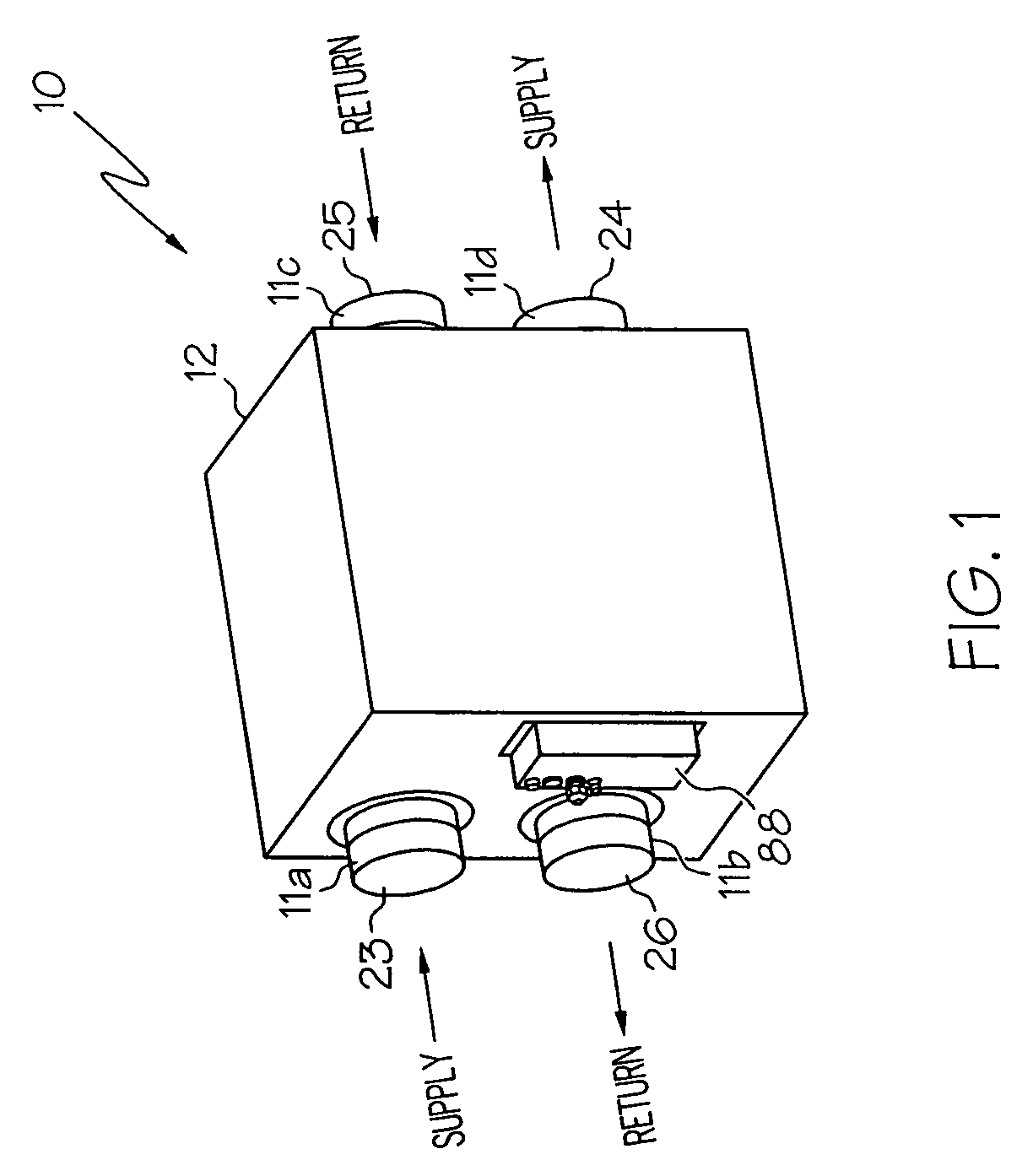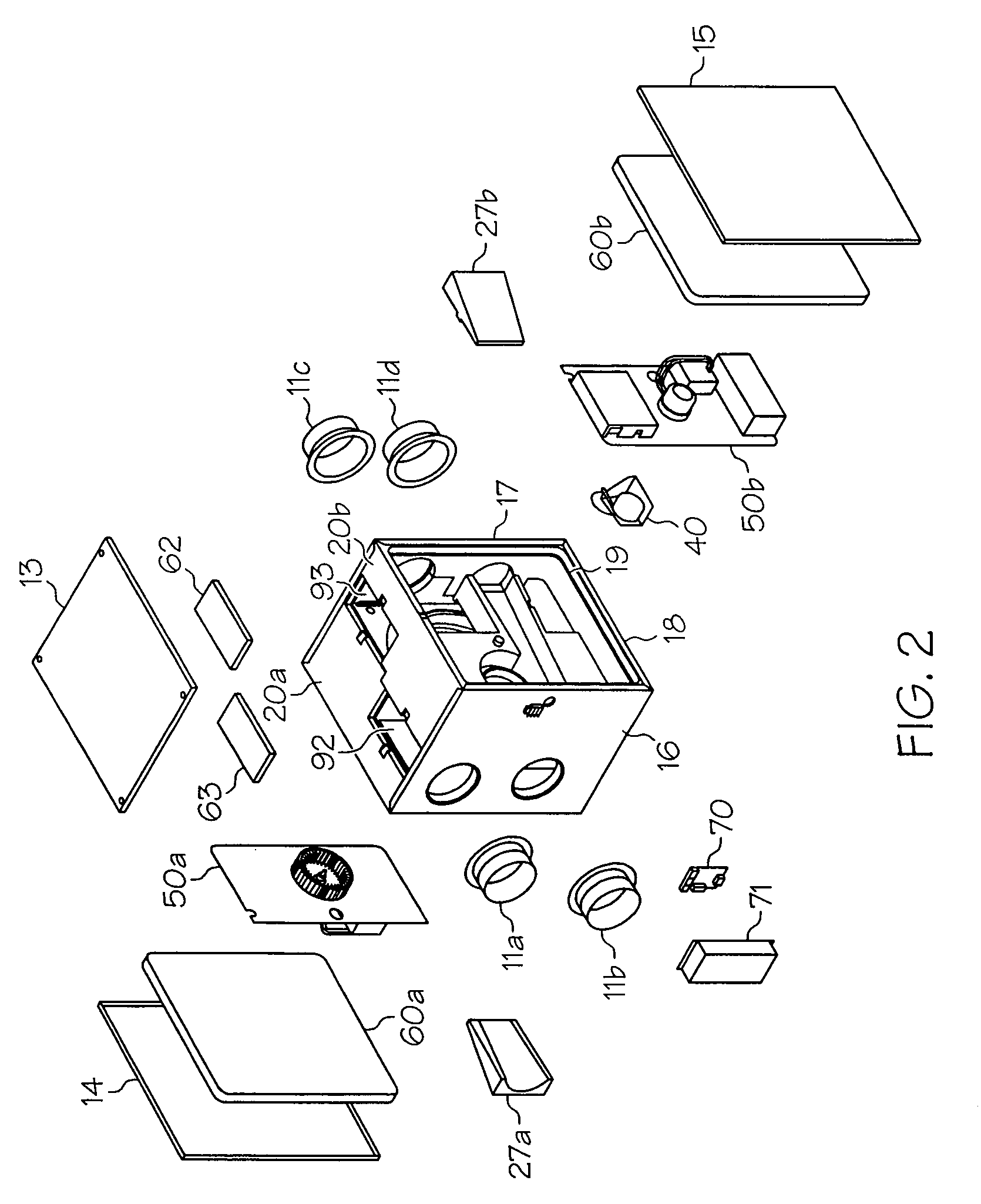Heat and energy recovery ventilators and methods of use
a ventilator and energy recovery technology, applied in the field of can solve the problems of reducing the efficiency of ventilation, so as to improve the efficiency of ventilation and energy recovery. the effect of previous heat and energy recovery ventilators
- Summary
- Abstract
- Description
- Claims
- Application Information
AI Technical Summary
Benefits of technology
Problems solved by technology
Method used
Image
Examples
Embodiment Construction
[0032]Reference will now be made in detail to various embodiments of the invention, examples of which are illustrated in the accompanying drawings, wherein like numerals indicate similar elements throughout the views.
[0033]The present invention provides an improved, low cost energy recovery ventilator (hereinafter, “ERV”) for a structure such as a house, commercial or industrial building, dwelling, room, or any other enclosed space. An ERV transfers two different kinds of heat between a supply air stream and a return (e.g., exhaust) air stream, which are flowing through it. Sensible heat is measured with a thermometer and is the difference between the incoming (supply) and outgoing air temperature (return). The measurement of the sensible heat recovered is referred to as apparent sensible effectiveness and is expressed in a percent. Latent heat is the heat that was originally required to evaporate the moisture from a liquid into a gas and is an important consideration in the energy ...
PUM
 Login to View More
Login to View More Abstract
Description
Claims
Application Information
 Login to View More
Login to View More - R&D
- Intellectual Property
- Life Sciences
- Materials
- Tech Scout
- Unparalleled Data Quality
- Higher Quality Content
- 60% Fewer Hallucinations
Browse by: Latest US Patents, China's latest patents, Technical Efficacy Thesaurus, Application Domain, Technology Topic, Popular Technical Reports.
© 2025 PatSnap. All rights reserved.Legal|Privacy policy|Modern Slavery Act Transparency Statement|Sitemap|About US| Contact US: help@patsnap.com



